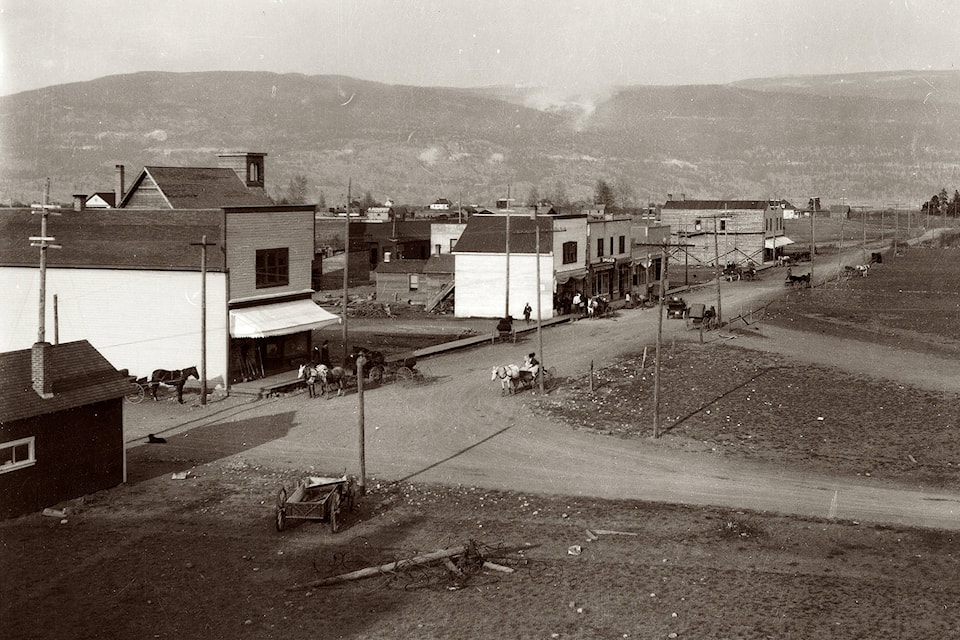The picture on my computer screen and tablet shows Summerland’s downtown in 1913, a little more than a century ago.
Looking down what is now Main Street from Victoria Road, there are a few buildings on the left side of the road, but none on the right. There are a few horse-drawn wagons, but no motor vehicles.
The picture evokes images of an idyllic time when life was simpler and moved at a much slower pace than today.
It also shows a Summerland few of us would recognize.
When the picture was taken, this community had fewer than 1,900 people.
Summerland did not yet have the agricultural research station. That facility wouldn’t open until late in 1914.
Construction crews were working on the railway bridge across Trout Creek, but the Kettle Valley Railway’s first train would not arrive until May, 1915.
Much of the transportation within the Okanagan Valley happened on the water, and the costs were high when measured against the wages of the day.
Summerland’s school had just two classrooms and did not offer many of the programs and course options available to today’s students.
Only one building in the picture still remains. That’s the building which now houses Rock Star District, at the corner of Main Street and Victoria Road.
Most of the residential neighbourhoods near the downtown core did not yet exist.
Early settlers spent their first years in tent homes, while they were constructing more permanent dwellings. Tent homes are not too bad during the late spring, summer and early fall, but they could get cold in winter. (An example of a tent home is on display at the Summerland Museum.)
The museum has other pictures depicting life as it was in earlier years.
One, from the 1920s or early 1930s, shows an old car on a narrow two-lane road. That road today is Highway 97, a fast four-lane highway connecting communities throughout the valley.
Others show families, dressed in fine clothing, enjoying picnics at the research station or boating excursions on Okanagan Lake.
Looking at these pictures, some may feel a sense of nostalgia, a longing for those halcyon days of old. But those days are gone and they will not return.
Summerland as it was in 1913 — or in any other past year for that matter — is our past, not our present.
We are no longer a quiet, recently-settled community of 1,900 people as we were in 1913.
The era of horse-drawn wagons as transportation is over. Even the years of passenger and freight travel by train have come and gone.
Education has changed and we no longer have a single two-room school for Summerland’s students.
And even if we could try to return to the lifestyle from a century ago, the world is not the same as it was in the past.
Today, Summerland’s municipal council is facing some decisions which would have been unthinkable a century ago.
There are repercussions to approving the 424-unit Banks Crescent seniors housing facility, and there are repercussions to allowing a regional composting facility in Summerland.
Such decisions must be made carefully and thoughtfully.
But whether council approves or rejects either or both these proposals, the community will still go through changes.
All communities will experience changes, and some of those changes may make us uneasy.
And a century from now, life in Summerland will likely be as different from today as our lives now are from the lives of the people who lived here in 1913.
John Arendt is the editor of the Summerland Review.
